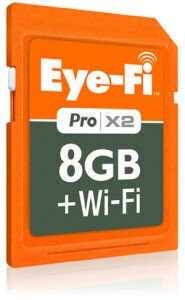by Daniel Bruns | January 9th, 2012
Introduction: While Eye-Fi has been a pioneer in the realm of wireless SD cards for years, the SD Association, the standards organization for SD cards, has recently thrown its hat into the ring. Unveiled at this year’s CES, the SD Association announced its plans to license the wireless standard to SD card manufacturers, marking a significant leap in storage technology. This move introduces a game-changing feature – wireless transmitters integrated into SD cards, enabling users to effortlessly transfer images or videos from a camcorder to their Mac or PC without the hassle of cables.
Wireless Standards and Compatibility: The wireless transmitter operates on the widely adopted 802.11a/b/g/n standards and is compatible with various SD card types, including SD, SDHC, and SDXC. Remarkably, this technology has also been seamlessly integrated into microSD, microSDHC, and microSDXC cards. The compact size of these cards, coupled with the wireless transmitter, positions them as potential wireless control points for other devices within a home network, potentially rendering USB wireless transmitters obsolete.
Versatility in Wireless Interfaces: The wireless technology comes in three distinct flavors:
- Web Interface: Supporting server upload and peer-to-peer functions.
- Home Network Interface: Enabling server upload and home network communication functions.
- Combined Interface: Incorporating both features in a single card, likely to become the most popular choice among users.
Challenges and Considerations: While the innovation holds promise, several challenges require addressing before widespread adoption. Key considerations include:
- Battery Impact: The crucial question revolves around the impact on the battery life of devices like camcorders or mobile phones. Any significant drain on power could hinder the practicality of this technology.
- Signal Interference: Potential interference with other wireless devices within a user’s home or office needs careful evaluation to ensure seamless coexistence.
- Cost Implications: Flash memory is already a costly component, and the additional expense associated with this technology could be a deterrent to mainstream adoption.
Despite these challenges, the prospect of eliminating an additional step in a photographer’s workflow is enticing. This advancement not only expedites the transfer of footage but also presents a potential game-changer in how content is managed in real-time. As the industry navigates these challenges, the allure of instantaneous content access may reshape the landscape of storage solutions.



